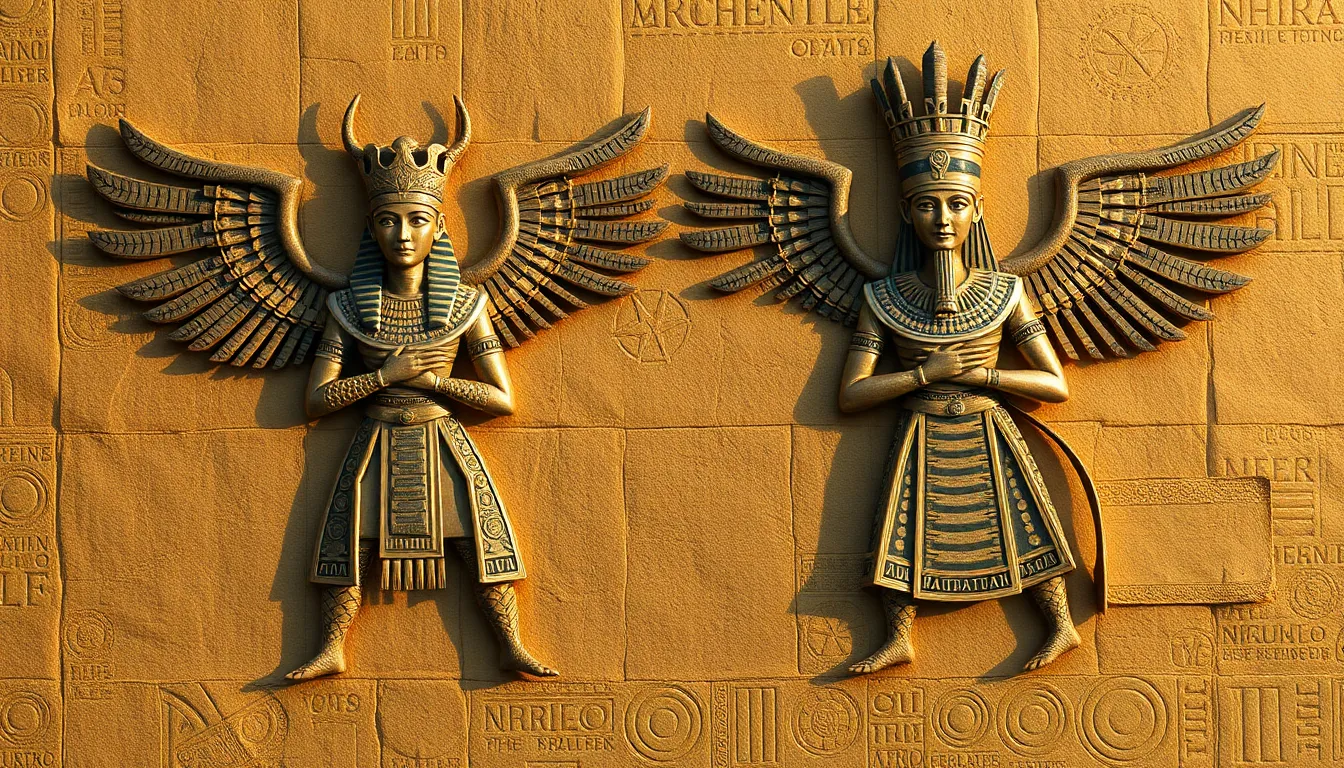The Duality of Set: Chaos and Order in Egyptian Myth
I. Introduction
Set, a prominent deity in ancient Egyptian mythology, embodies the complex interplay between chaos and order. As a god often associated with storms, disorder, and violence, Set’s character is multifaceted and reflects the ancient Egyptians’ understanding of the universe’s balance. In their beliefs, chaos and order were not opposing forces; rather, they existed in a dynamic equilibrium essential for maintaining cosmic balance. This article explores the duality of Set, examining his role in mythology, his historical context, and his lasting impact on Egyptian culture and beyond.
II. The Historical Context of Set
Set’s character has evolved significantly throughout Egyptian history. Initially revered as a powerful god of the desert and storms, he was associated with strength and protection. In pre-dynastic Egypt, Set was celebrated in various local cults, often depicted as a fierce protector. However, with the rise of Osiris and the establishment of a more structured pantheon during the dynastic period, Set’s image became more complex.
- Origins: Set’s earliest references can be traced back to the pre-dynastic period, where he was worshiped in regions such as Nubia.
- Evolution: As Egyptian civilization progressed, Set’s role shifted from a beneficent deity to a more ambivalent figure, often seen as a rival to Osiris, the god of the afterlife.
- Comparison: In contrast to other deities, such as Horus, who represent order and harmony, Set embodies the necessary chaos that can lead to regeneration and transformation.
III. Set as the God of Chaos
Set is distinctly recognized as the god of chaos, embodying disruption and turmoil. His attributes and symbols often convey a sense of wildness and unpredictability.
- Attributes: Set is commonly associated with the desert, storms, and foreign lands. His chaotic nature is symbolized by the Set animal, a creature that defies easy classification.
- Myths: One of the most notable myths illustrating Set’s chaotic nature is the tale of his conflict with Osiris, where Set murders his brother, representing the ultimate act of chaos disrupting the order of the universe.
- Cosmic Battle: Set’s role in the cosmic battle against Ma’at, the goddess of truth and order, highlights the struggle between chaos and harmony in Egyptian cosmology.
IV. Set as a Protector and Enforcer of Order
Despite his reputation as a god of chaos, Set also holds a significant role as a protector and enforcer of order. His involvement in the Osiris myth showcases this duality.
- Osiris Myth: After Set kills Osiris, he becomes the antagonist. However, his actions lead to the eventual resurrection of Osiris through the efforts of Isis, symbolizing the cyclical nature of life and death.
- Maintaining Balance: Set’s chaotic actions inadvertently contribute to the restoration of order, demonstrating that chaos can lead to new beginnings.
- Relationship with Ma’at: Set’s complexity is further illustrated in his relationship with Ma’at, as he represents the necessary chaos that can challenge and strengthen the established order.
V. The Symbolism of Set’s Animals
The Set animal, often described as a composite creature, serves as a powerful symbol of Set’s duality. Its characteristics reflect both chaos and order.
- Characteristics: The Set animal has been interpreted as a mix of different animals, including the donkey and the aardvark, symbolizing its otherness and unpredictability.
- Animal Symbolism: In Egyptian culture, animals often represented certain attributes. The ambiguity of the Set animal underscores Set’s complex nature as both a disruptor and a protector.
- Reflection of Duality: The dual characteristics of Set’s animal highlight the balance between chaos and order, suggesting that both elements are essential for the universe’s equilibrium.
VI. The Cultural Impact of Set’s Duality
Set’s duality has had a profound influence on ancient Egyptian society, religion, art, and literature, shaping the cultural narrative of chaos and order.
- Influence on Society: Set’s complex persona allowed ancient Egyptians to understand and navigate life’s unpredictability, serving as a reminder that chaos can lead to creative and transformative outcomes.
- Art and Literature: Set is frequently depicted in various forms of art, often portrayed in battle or as a protector, embodying the tension between chaos and order. The tales of Set and Osiris have inspired countless literary works.
- Lasting Legacy: The duality of Set continues to resonate in modern interpretations of mythology, serving as a metaphor for the inherent conflicts within nature and society.
VII. The Modern Reinterpretation of Set
In contemporary discussions of mythology, Set’s duality remains relevant, offering insights into the balance of chaos and order in today’s world.
- Contemporary Views: Modern interpretations of mythology often reflect on the themes of chaos and order, drawing parallels between Set’s narrative and current societal dynamics.
- Popular Culture: Set’s character has appeared in various forms of media, including films, books, and video games, often as a representation of the struggle between conflicting forces.
- Relevance Today: Set’s story serves as a reminder of the importance of embracing chaos as a catalyst for change and growth in a rapidly evolving world.
VIII. Conclusion
Set’s dual nature as both a god of chaos and a protector of order reflects the intricate balance that ancient Egyptians sought to understand in their world. His stories illustrate that chaos and order are not merely opposing forces but essential components of a harmonious existence. As we explore Set’s legacy, we are invited to reflect on our own lives, recognizing the balance between unpredictability and stability. The duality of Set continues to inspire and provoke thought, encouraging further exploration of the rich tapestry of Egyptian mythology.




